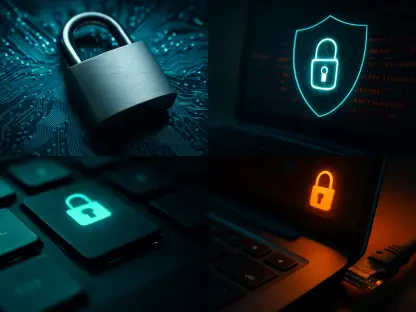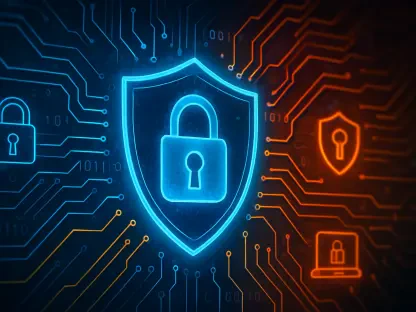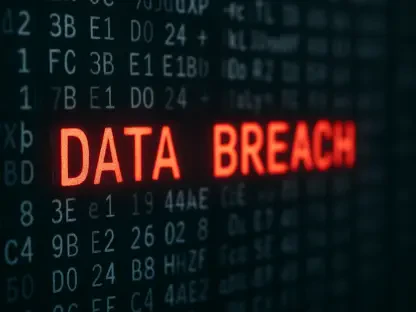In an era where cybersecurity threats loom larger than ever, a startling revelation has emerged about a potential supply chain vulnerability in Advanced Installer, a widely adopted software installer authoring tool trusted by industry titans like Microsoft and Apple. This tool, integral to creating application installers across more than 60 countries, has come under scrutiny for a flaw that could mirror the catastrophic SolarWinds attack, which compromised thousands of organizations through a tainted software update. The risk, identified as a “bring your own update” (BYOU) issue, raises alarming questions about the safety of software update mechanisms that millions rely on daily. As businesses and developers depend on such tools for efficient software deployment, the possibility of attackers exploiting updates to distribute malware is a chilling prospect. This discussion aims to unpack the nature of this vulnerability, assess its potential impact, and explore the urgent steps needed to prevent a disaster of unprecedented scale.
Uncovering the Flaw in Advanced Installer
A critical design choice in Advanced Installer lies at the core of the current cybersecurity concern, highlighting a dangerous prioritization of user convenience over stringent security protocols. The tool, used by developers worldwide to package software, features an update mechanism that automatically checks for and installs updates through a remotely hosted configuration file accessed via a URL parameter. Alarmingly, this process does not mandate digital signatures for update files by default. This means that if a developer’s system falls victim to a breach—an event far too common in today’s threat landscape—attackers could manipulate the update process by inserting malicious files. Such an exploit would appear legitimate to operating systems and security software, bypassing traditional defenses and potentially infecting countless downstream users with malware in a single, devastating stroke.
Further examination reveals how this vulnerability could be exploited with relative ease, amplifying the urgency of addressing it. Unlike tools that enforce strict verification, Advanced Installer’s default settings allow unsigned update packages to be accepted without question, creating a glaring weak point in the supply chain. Cybersecurity experts have pointed out that a compromised developer account could serve as a gateway for attackers to distribute harmful updates across a vast network of users. This flaw isn’t just a theoretical risk; it represents a tangible threat that could undermine trust in software deployment tools. The absence of mandatory security checks in the update process underscores a systemic issue that demands immediate attention from both developers and vendors to prevent exploitation before it spirals into a full-blown crisis.
Comparing the Threat to SolarWinds
The scale of the risk posed by Advanced Installer’s vulnerability draws unsettling parallels to the SolarWinds incident, a supply chain attack that reverberated through global organizations, including critical government agencies. That event saw attackers infiltrate a trusted software update to distribute malware, affecting thousands of entities in one of the most significant breaches in recent memory. Similarly, the BYOU vulnerability in Advanced Installer could enable hackers to target an extensive user base by tampering with updates, leveraging the inherent trust users place in automated processes. While no active exploitation of this specific flaw has been documented yet, the potential for a comparable disaster looms large, prompting cybersecurity professionals to sound the alarm about the urgent need for preventive measures.
Delving deeper into the implications, the comparison to SolarWinds serves as a stark warning of what could unfold if this issue remains unaddressed. The nature of supply chain attacks makes them particularly insidious, as they exploit the interconnectedness of modern software ecosystems to propagate harm far beyond the initial point of compromise. Experts from Cyderes, who identified the BYOU risk, emphasize that the fallout from such an attack could be catastrophic, disrupting operations across industries and eroding confidence in digital infrastructure. The absence of reported incidents so far offers a narrow window of opportunity to act, but complacency could prove disastrous. This looming threat underscores the importance of learning from past breaches to fortify defenses against vulnerabilities that could affect millions in a single, coordinated assault.
Developer Stance and User Responsibility
Caphyon, the company behind Advanced Installer, has responded to the identified risk by asserting that the tool functions as designed, placing the onus on users to enhance security through available settings. Specifically, the software offers an option to enforce digital signatures for updates, ensuring that only verified packages are installed using the same certificate as the updater. However, this feature is not enabled by default, and evidence suggests it is frequently overlooked by users seeking simplicity over safety. This stance reflects a belief in user autonomy, but it also raises questions about whether such critical protections should be optional in an environment where cyber threats are increasingly sophisticated and pervasive.
Compounding the issue is the apparent reluctance among users to adopt these security measures, as revealed by recent research into programs packaged with Advanced Installer. Studies conducted by cybersecurity firms indicate that many applications, including updates for Advanced Installer itself, do not enforce signature requirements, leaving systems exposed to potential exploitation. This trend points to a cultural or practical barrier where the ease of deployment often overshadows the need for rigorous safeguards. The gap between available security features and their actual implementation highlights a significant challenge: ensuring that users prioritize protection in their workflows. Without a shift in behavior or stricter defaults from developers like Caphyon, the risk of a supply chain attack remains a pressing concern that could catch many off guard.
Balancing Usability Against Security Needs
The vulnerability in Advanced Installer exemplifies a persistent dilemma within the software industry, where the drive for user-friendly design frequently clashes with the imperative for robust security. Tools like this one are engineered to offer flexibility and customization, catering to developers who value streamlined processes and minimal friction in deployment. However, this focus on accessibility comes at a steep cost when features like optional digital signatures create exploitable gaps. The acceptance of unsigned updates as a default setting is a clear manifestation of this trade-off, potentially exposing entire ecosystems to threats that could have been mitigated with stricter protocols from the outset.
This tension between usability and security is not unique to Advanced Installer but reflects a broader challenge across the tech landscape, where convenience often takes precedence over caution. Cybersecurity advocates argue that such leniency is no longer tenable, especially as supply chain attacks grow in frequency and sophistication. The potential for widespread damage through a single compromised update underscores the need for a paradigm shift, where security becomes an inherent part of design rather than an afterthought. Until developers and vendors embrace this mindset, tools that prioritize ease of use over protection will continue to serve as weak links in the digital supply chain, inviting exploitation by adversaries who are quick to capitalize on any lapse in defenses.
Taking Action to Secure Software Updates
Addressing the risk posed by tools like Advanced Installer demands immediate and decisive action from vendors and developers alike to prevent a potential catastrophe. Key steps include enforcing digital signatures for all updates, ensuring that only verified packages are accepted by systems. Additionally, testing updates in isolated, secure environments before deployment can help identify anomalies or malicious content. Monitoring installer activity for unusual behavior is another crucial measure, enabling early detection of potential breaches. These practices, though resource-intensive, are essential to safeguarding the integrity of software distribution channels against threats that could impact millions of users.
Beyond individual efforts, there is a growing consensus among experts that developers like Caphyon should take a more proactive role by making digital signatures mandatory rather than optional. Such a change could fundamentally alter user behavior, embedding security as a non-negotiable aspect of the update process. Furthermore, organizations must prioritize regular audits of their software supply chains to identify and address vulnerabilities before they are exploited. Reflecting on past incidents like SolarWinds, it becomes evident that reactive measures were insufficient to stem the damage once breaches occurred. By implementing these strategies now, the industry can build resilience against supply chain risks, ensuring that the tools relied upon for progress do not become conduits for disaster.









